The Post Classic Racing Association of NSW took on a mighty challenge by hosting the 2023 Festival of Speed at Sydney Motorsport Park and introducing ‘international’ rules for the new class called Unchained Formula One.

Before the event, club president Ken Lindsay said that including what he called “international rule classic machines” would provide “entertainment for all tastes”. He described the new Unchained Formula One class as “a more open combination of Australian, New Zealand, USA and British historic rules” – and it certainly provided racing as intense and skilled as any modern class of competition.
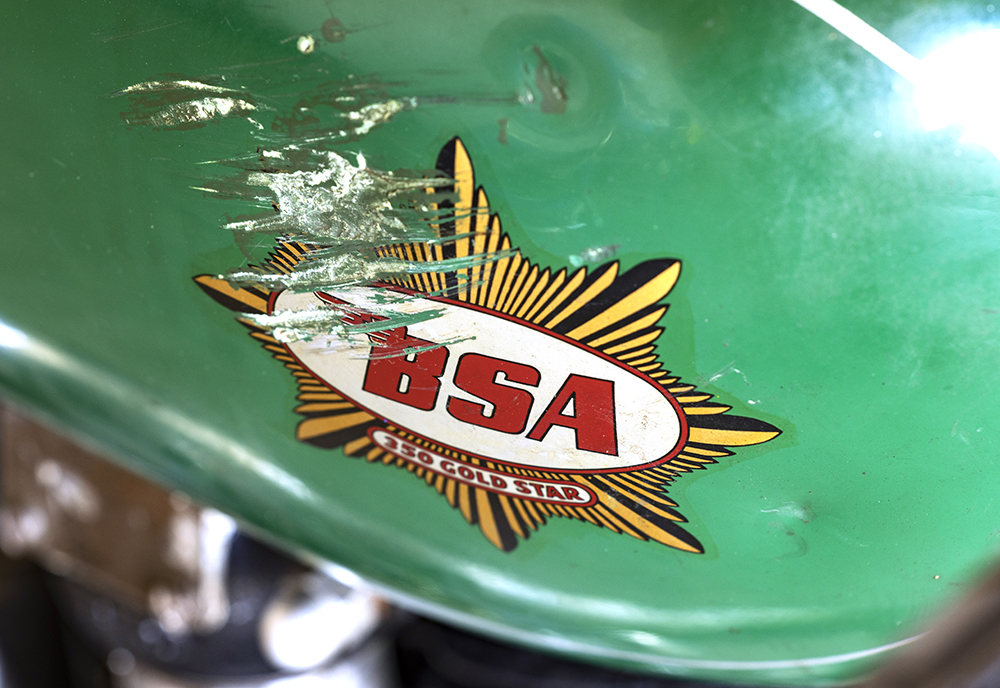
Hopefully, next year’s event will bring out the remaining big-name Australian teams which previously competed in the International Challenge at Phillip Island but have gone into hibernation since 2020.
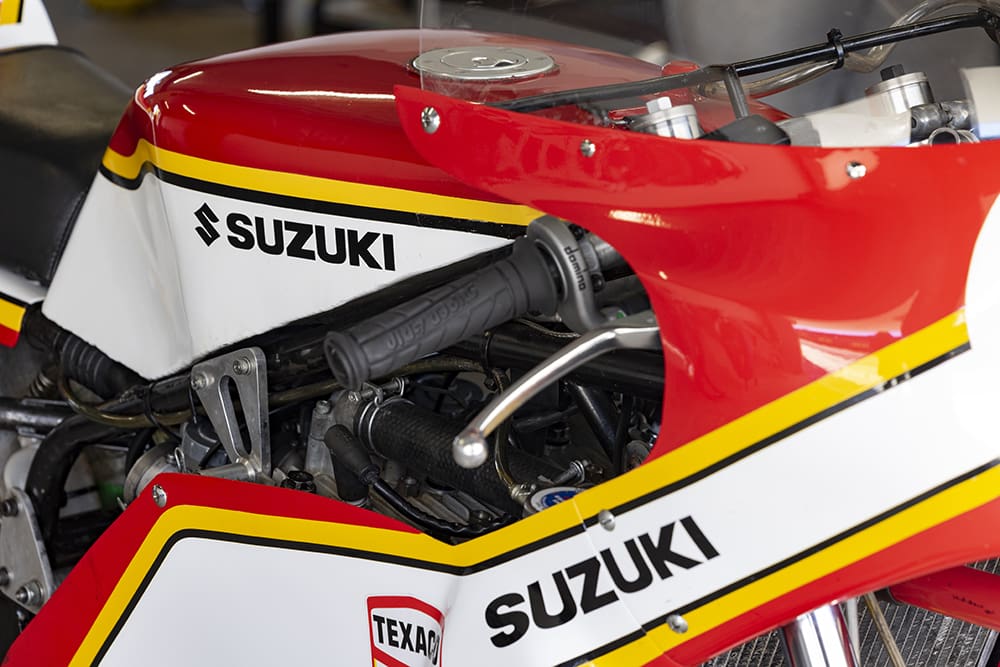
While it will take years for international shipping to return to affordable levels, there is no reason why global stars wouldn’t want to fly out as guest riders on Australian machinery. Entries of around 180 competitors, many running bikes in several classes, and a healthy trade and club stand alley bode well for the future of the festival.
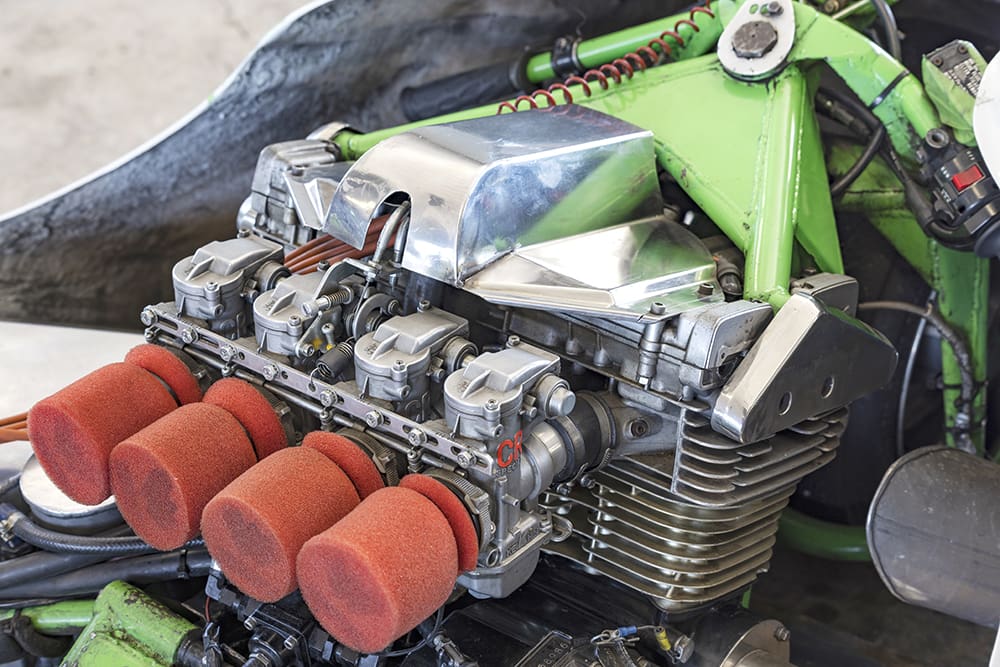
Here is a cross-section of competitors and their motorcycles at the event.
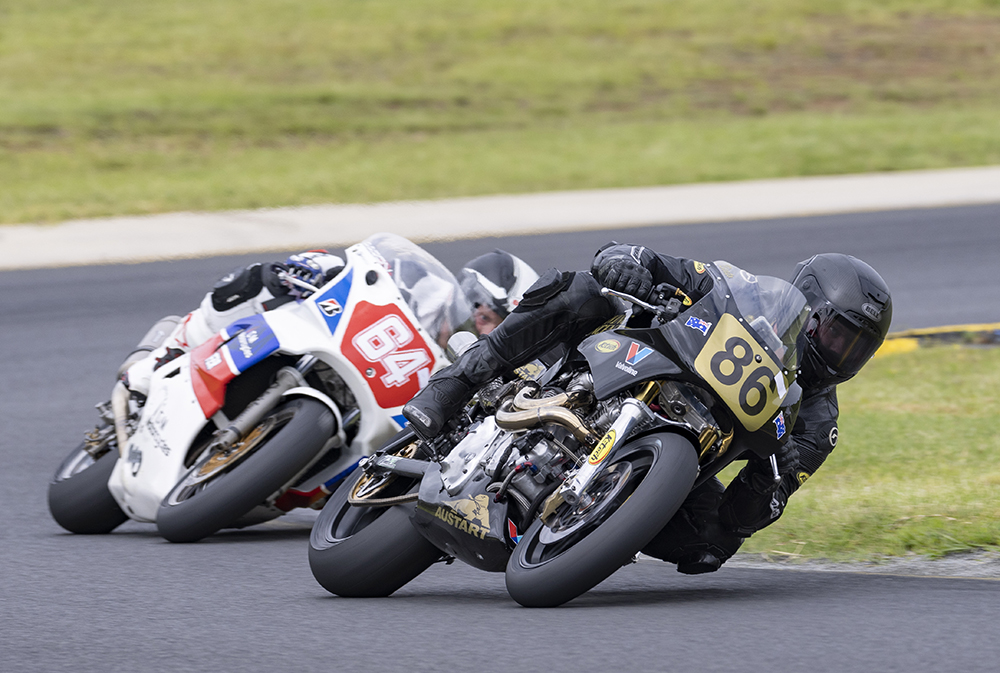
BEAU BEATON
Unchained Formula One Irving Vincent
“Bikes like these are what the big-name riders want to race,” said Ken Horner. He’s waited two years for a class similar to Phillip Island’s International Challenge to be organised. Over two decades, the Challenge saw some of the world’s most famous riders slug it out on classic racing’s fastest, most tech-loaded and expensive motorcycles. Beau Beaton, a long-time associate of the Irving Vincent outfit, was one rider who really took it to the international teams from the UK, USA, Ireland and New Zealand. So it was a no-brainer he was first to climb aboard the latest Irving Vincent.
It’s a beast that was out-accelerating much more modern motorcycles. Punched out to 1400cc, this brute runs a rare 43mm front fork with one of the first four-piston calipers produced by Brembo in 1982. Ken says ongoing development means these big twins “live in an intensive-care ward”. Similarly he predicts a period of nurturing to get big-name riders and bikes like his back out on track after the Covid-19 pandemic.
“International freight costs are poisonous right now,” he says, “but if these local bikes are brought back out the riders will appear. It’s up to the entrants to enter; the rest will look after itself.”
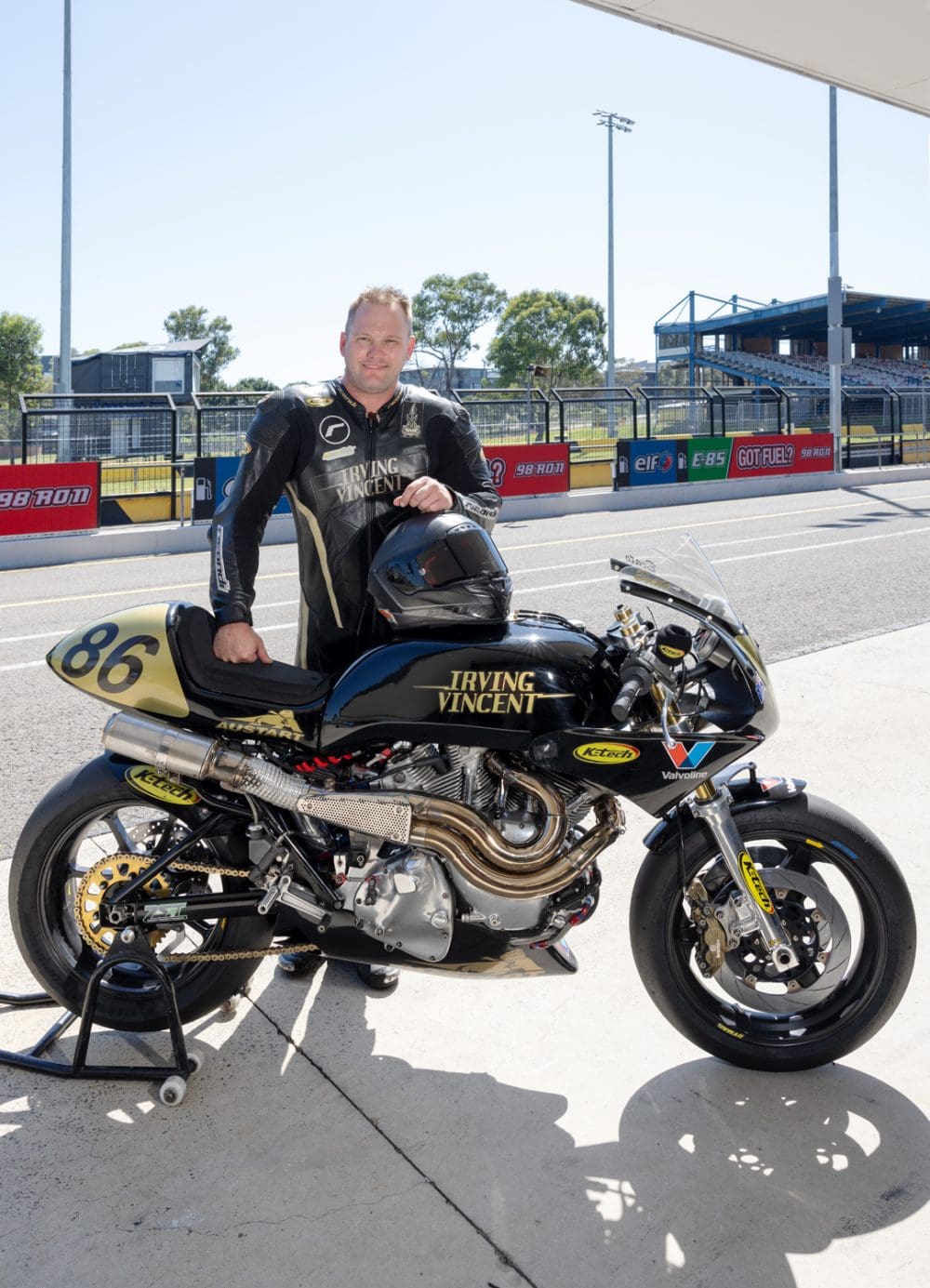
Mick Lendrum
1981 Kawasaki Motoplast
You’ll seldom meet a more enthusiastic classic racer than Mick Lendrum. “I’m just there having fun, but I did set a PB this weekend,” he said as he wheeled away a very rare motorcycle. Italy’s Motoplast frame often gets confused with France’s Moto Martin as both look similar and were produced around the same time for Formula One and endurance racing, plus a road-going option for wealthy riders.
Mick, who has had a long career in motorcycle sales and servicing, has owned his Motoplast since 1981 when just a handful were imported into Australia. Perhaps as few as 70 frames were produced over three years, mostly to house Kawasaki’s 900cc/1000cc four-cylinder engines. Over the years, Mick has used his industry contacts to source a close-ratio gearbox and some go-fast goodies to increase engine capacity to 1135cc. He also now owns four of the frames brought into Australia.
At the Festival of Speed, his Motoplast was eligible for several classes covering the 1980s plus the new Unchained Formula One. This meant Mick was up against riders like former world Superbike champion Troy Corser, Alex Phillis, Aaron Morris and rising ASBK star Jack Passfield.

Aaiden Coote
1972 Rob North Triumph
West Australian classic racers aren’t fazed by distance. To get Aaiden Coote on his immaculate Rob North triple in Sydney involved owner Peter Curry undertaking a round trip of 8000km. However, Curry is well used to this scenario.
“I commit to two events on the eastern seaboard each year, this Festival of Speed and wherever the national titles are held,” he says. Curry had owned this triple since 2012, and Coote started riding it early on despite being just 21 years old. Over the years the partnership has been rewarded with shelves of trophies.
At this event, Coote made a clean sweep of the Post Classic 750cc class and finished third in the Period 4 1300cc class, despite his bike retaining its standard 750cc bore size. It’s been remarkably reliable over the years, a result of Curry employing the best brains in the business from around the world. For example, he sent the heads to Richard Peckett of P&M in the UK, who converted them to centre-mounted spark plugs. The crankcases were sent to New Zealand’s Bruce Verdon, who supplied and fitted one of his TT Industries gearboxes. Megacycle cams and Carrillo conrods came from America to confirm that the world of classic racing has no boundaries regarding distance.
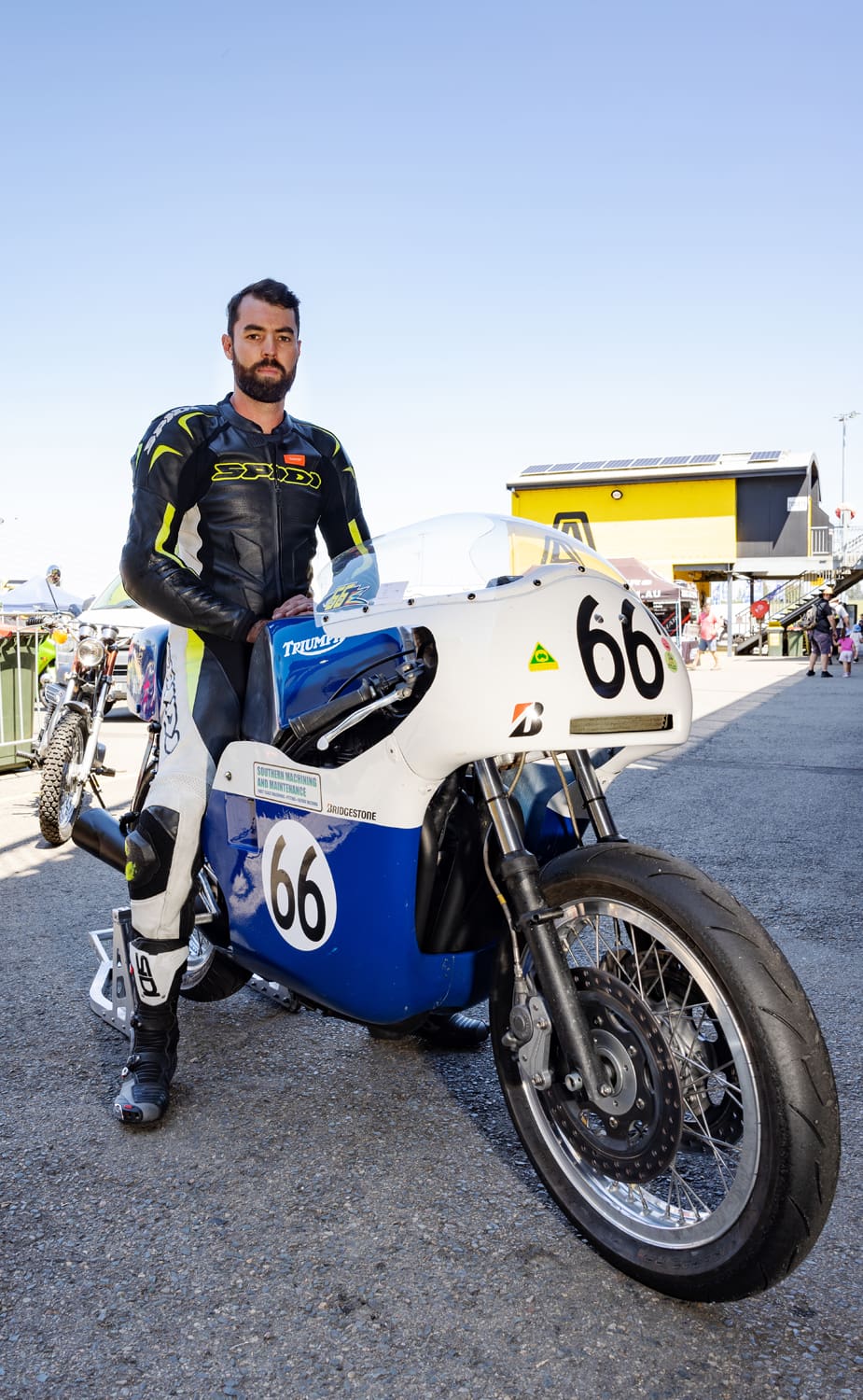
Michael Berti Mendez
1982 Ducati TT2 992cc
Ducati’s TT2, with its high-revving 600cc engine and 7kg frame, was described in Europe at the time as being a “four-stroke grand prix racer”. However, Australian tuners got obsessed about increasing capacity to around 1000cc to make it more competitive against Japanese four-cylinder Superbikes. Owner Jim Knight is a long-time associate of legendary Ducati tuner Arthur Davis, who since 2000 has operated Desmo HQ in Byron Bay.
To recreate a version of what Davis achieved in the 1980s, the pair combined parts from several Ducati air-cooled models. The Pantah cases contain a 71.5mm crankshaft from a DS 1100cc engine, while 900cc Monster barrels are overbored to achieve 94mm. This required moving the engine studs and adding strengthening internal welding. A 750 Paso clutch housing contains a 749 dry slipper clutch while the six-speed, close-ratio gearbox is from a Monster 800.
Rider Michael Berti Mendez hadn’t raced for 16 years, but a career that involved Daytona, world Supersport and African desert enduros meant he was soon up to speed. Sadly, when track temperatures hit 68ºC the rear cylinder nipped up. Mendez was then put on a 750cc version and won the Period 5 F750 class and finished fourth overall in the P5 1300cc class.
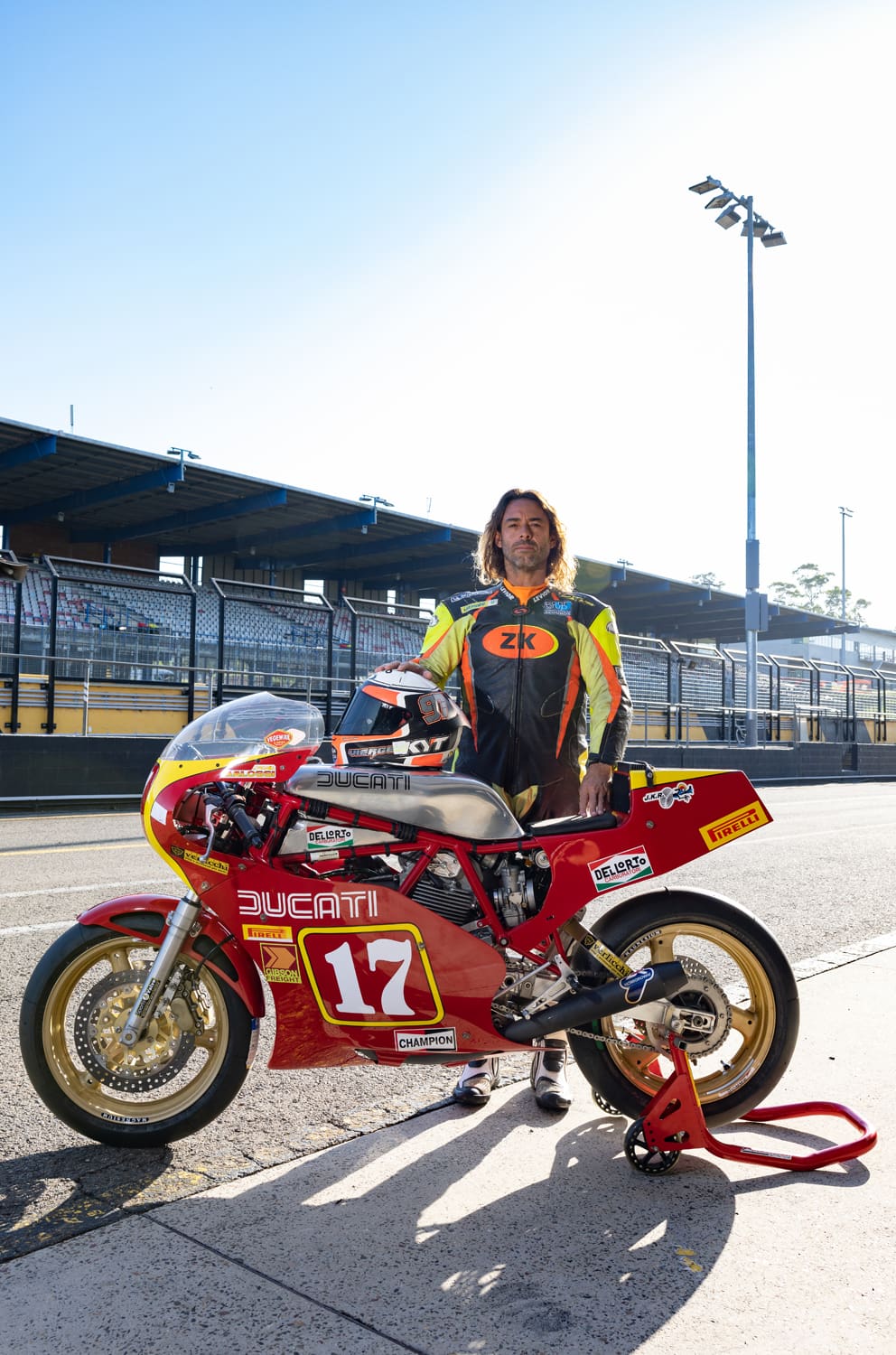
Troy Corser
Unchained Formula One Suzuki Katana
Australia’s two-time world Superbike champion Troy Corser appears to be heading into a new career. In last year’s final round of the ASBK title at The Bend, he turned up unexpectedly to race a Honda RC30 in the Superbike Masters support class on his 50th birthday. This time out he jumped on the latest version of the Suzuki Katana that was the Aussie bike to beat in the Phillip Island International Challenge.
Bikes like these took on Roger Winfield’s UK team of Harris-framed Suzuki F1s with lead rider Jeremy McWilliams. Owner Les Corish has big plans for what is shaping up to be a new era for this class of bike. Rather than twin shocks, the Katana employs an F1-type monoshock swingarm similar to that used on Neville Hiscock’s New Zealand-built Katana in the 1980s. The engine has been supplied by ex-drag racer Trevor Birrell, while Dale Gilbert has built yet another one of his trick frames.
Corish can’t give enough credit to Matty McKinnon, who built the bike. After fixing a blown engine cover gasket, a “five-cent spring” in the gearbox failed after Corser had won the first race. Corish, as usual, had a Plan B. Ex-Superbike racer Greg Avery delivered the Period 5 Unlimited trophy on a twin-shock Katana. Corser was unfazed and said he would return.
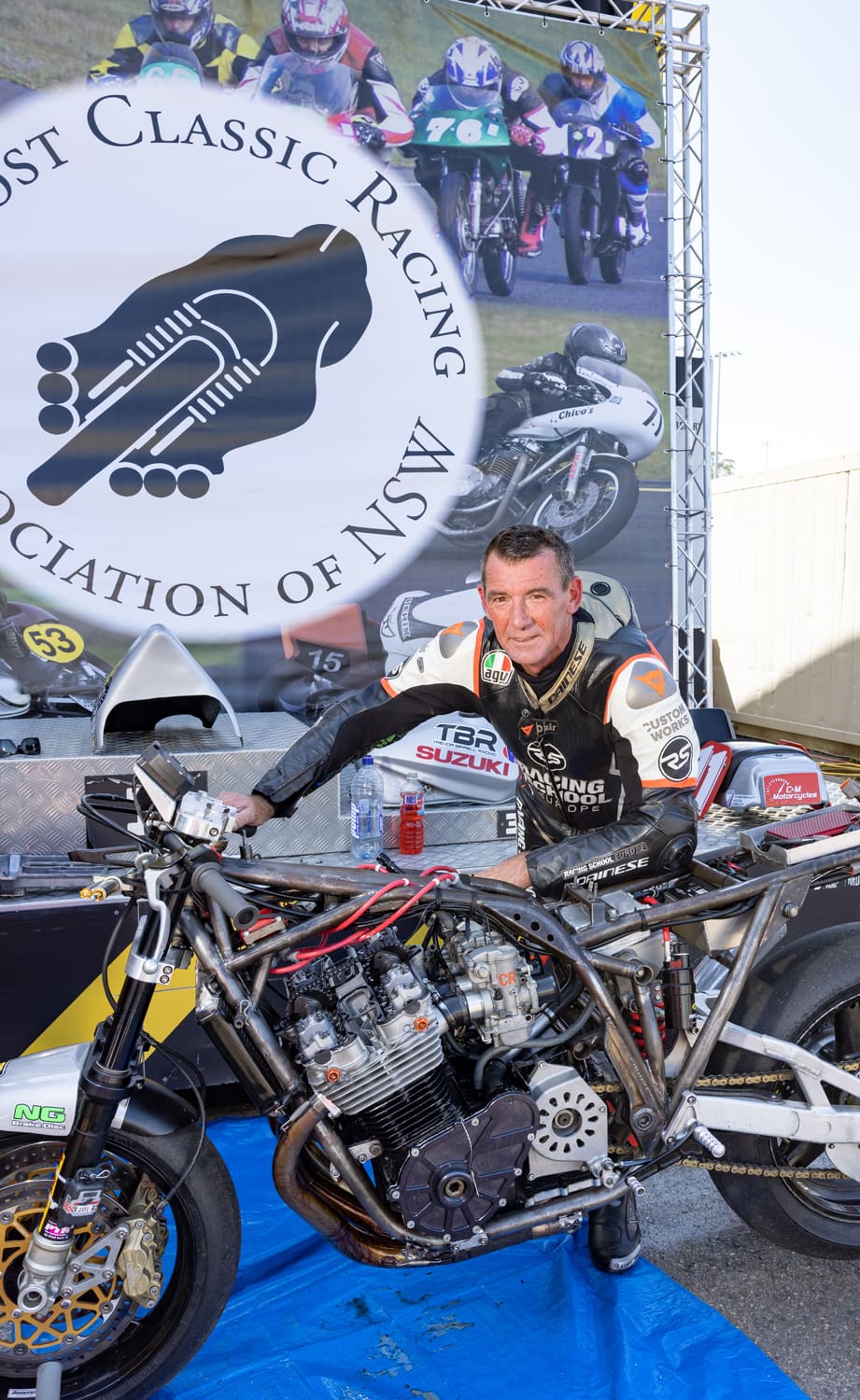
David ‘Duff’ Woolsey
1972 Norvil Commando 750
An early convert to classic racing in the UK in the early 1980s, Duff Woolsey emigrated to Australia 20 years ago with a Seeley G50 to continue the sport he loves. Little did he realise that a chance meeting would see him reunited with one of his first racebikes some 30 years later. The Norvil was making its race return at the festival and Woolsey was bursting with enthusiasm, despite the extremely hot track conditions playing havoc with tyre pressures.
“As well as getting the Commando back I got involved again with a lot of old mates who came out and helped me assemble it,” he said. “I can still remember the fun times in those early days, like when I found myself leading a race in the wet at Brands Hatch for the first time ever and started asking myself ‘what do I do now?’.”
The Commando was assembled from parts and, after an early huge engine blow-up, was rebuilt with a Nourish one-piece steel crank balanced to reduce vibrations at higher revs, Carrillo conrods, a Combat-spec head running 33mm Amal concentric carbs, a PW3 camshaft, five-speed Quaife gear cluster and Newby clutch and belt drive. Handling is helped with an underframe brace, the isolastic chassis rubbers being wound up tight, and a UK Maxton front fork conversion using modern supersport-style internals.
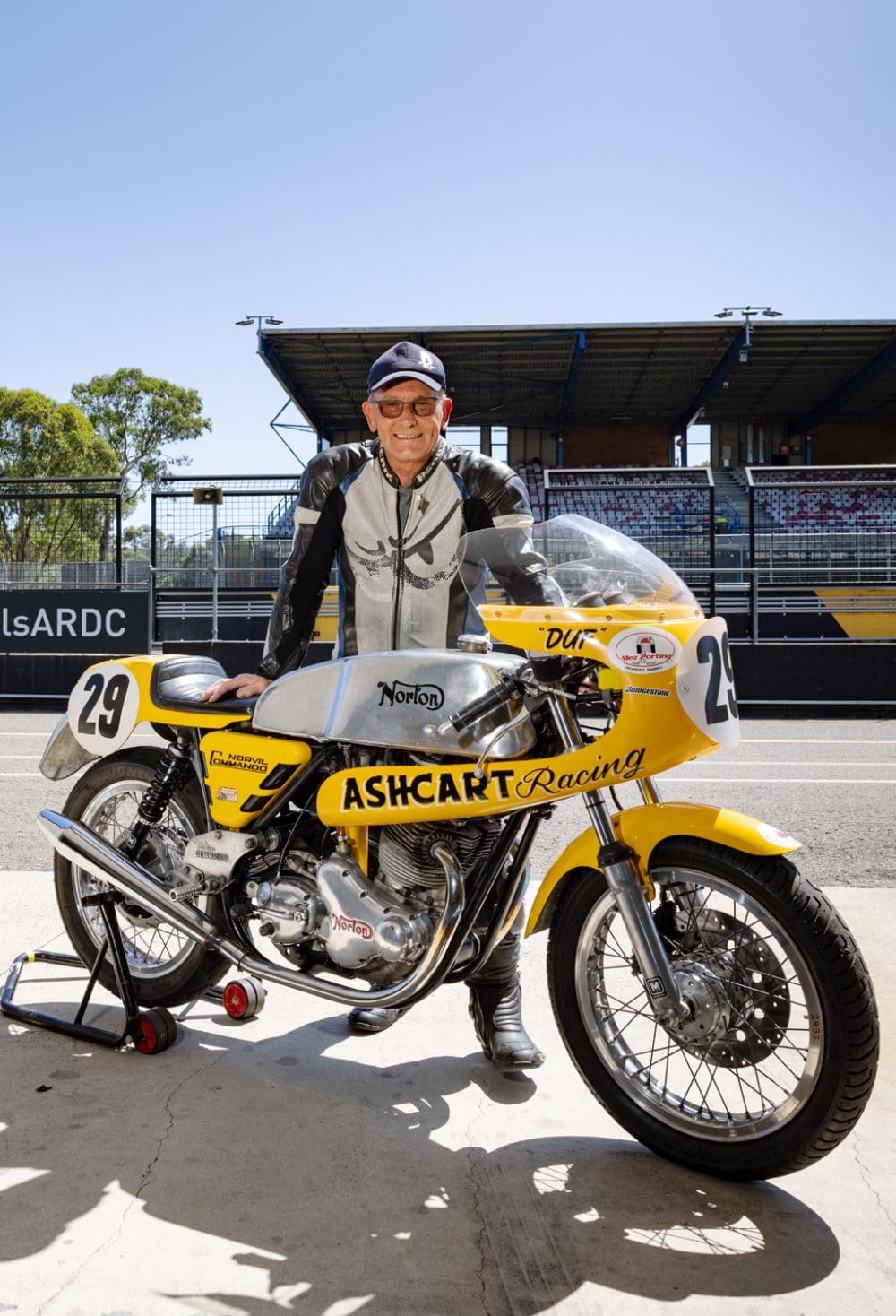
Stephen Kairl/Peter Ward
Armstrong Rotax CM35 250cc
If you are looking for grand prix heritage from the early 1980s you can’t go past an Armstrong CM35. First produced in 1981 by UK firm CCM, it made an immediate impression at both the Isle of Man TT and in several GP races. Its water-cooled, twin-cylinder, 247cc two-stroke engine was fitted to a tubular space frame that featured rising-rate rear suspension and the best Marzocchi front fork and Brembo disc brakes available at the time.
Peter Ward, highly regarded among the NSW classic racing fraternity, literally stumbled across his first Armstrong when he was unexpectedly offered a rough example at a race meeting. At the time he was up to his neck in various TZ Yamahas but soon changed his allegiances and at one stage owned three, including a carbon-framed version raced in the Swann Series by Niall Mackenzie in the mid-1980s.
“I’d never seen one until I pulled it apart,” he said. “My thoughts were that it was so different we’d better have a play with it.” The end result was a lap record set at Eastern Creek in 2010 that is still unbroken. As well as the Armstrong, Stephen Kairl rode in three other classes on bikes ranging from 125cc to 1000cc.
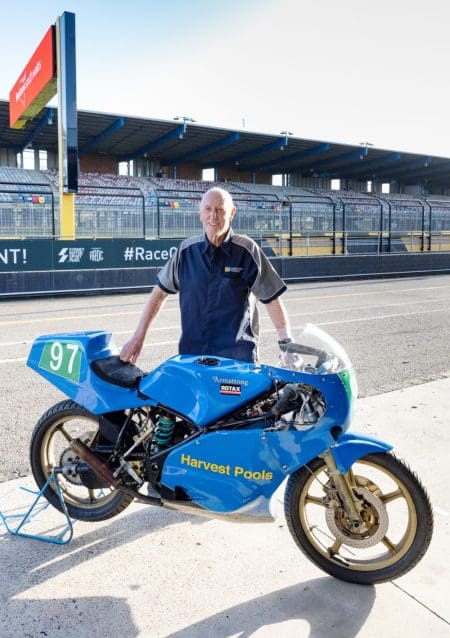
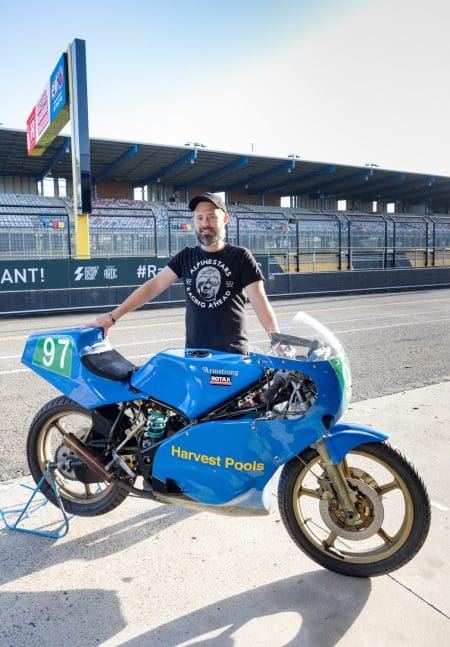
Thomas Dunster
Early-1950s Velocette MAC 350
The Dunsters are keeping it all in the family, with son Thomas taking over the controls of a Velocette his father Peter has raced since the early 1990s. The frame is believed to be one of four that Aussie Velocette racer-tuner Don Cameron built in the early 1950s. Peter describes it as being “a 7/8th scale of a Norton featherbed”.
The frame layout was designed to move the engine farther forward to improve racetrack handling. Peter has a photograph of one of the four Cameron creations being raced at Sydney’s long-gone Mount Druitt circuit looking much like this one. MAC Velocettes in capacities of 250cc and 350cc were the backbone of domestic racing back then. Conversion to methanol allowed higher compression while keeping the single-cylinder engine cooler. Peter acquired the little racer in the late 1980s when classic racing was starting to boom and he won a NSW title on it. Now Thomas, who has a background in dirtbikes, is running at the front of the field. However, a decline in entries in these earlier classes means combined grids covering several periods. Peter laments this situation as well as the mechanical knowledge being lost as older participants retire.
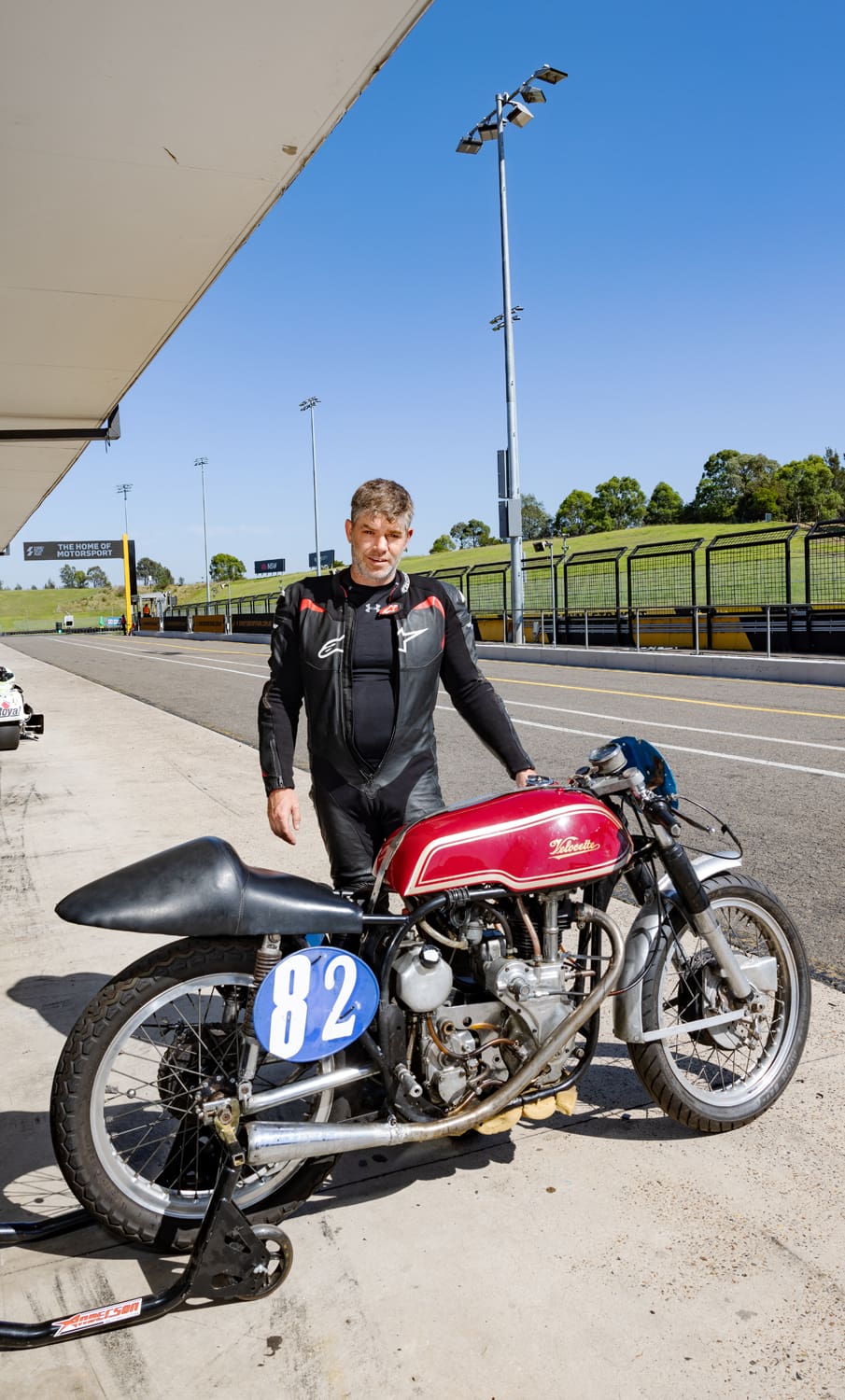


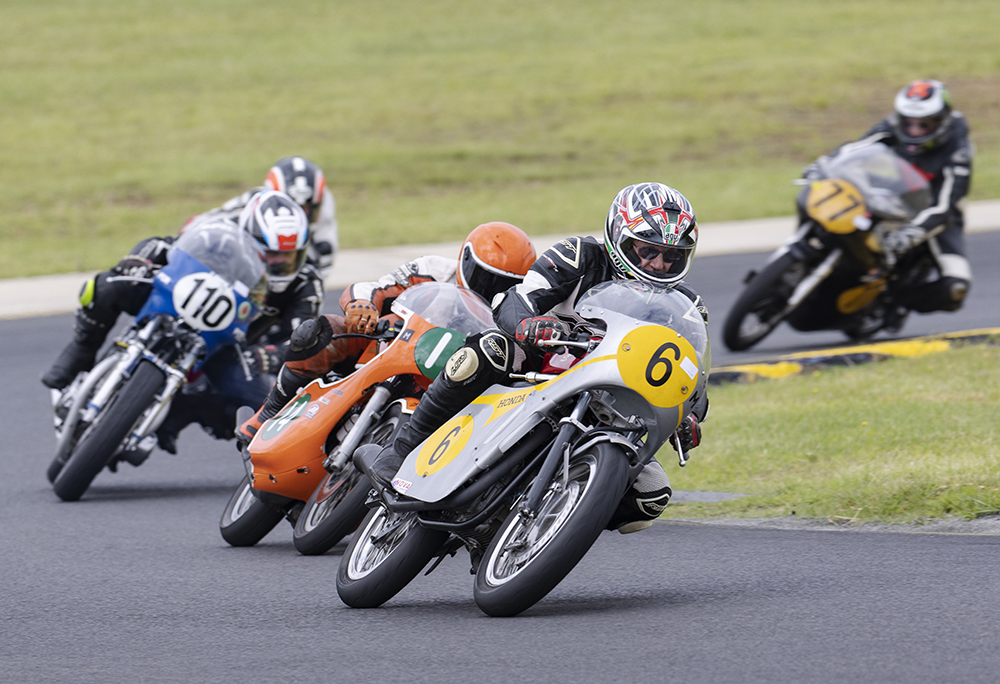

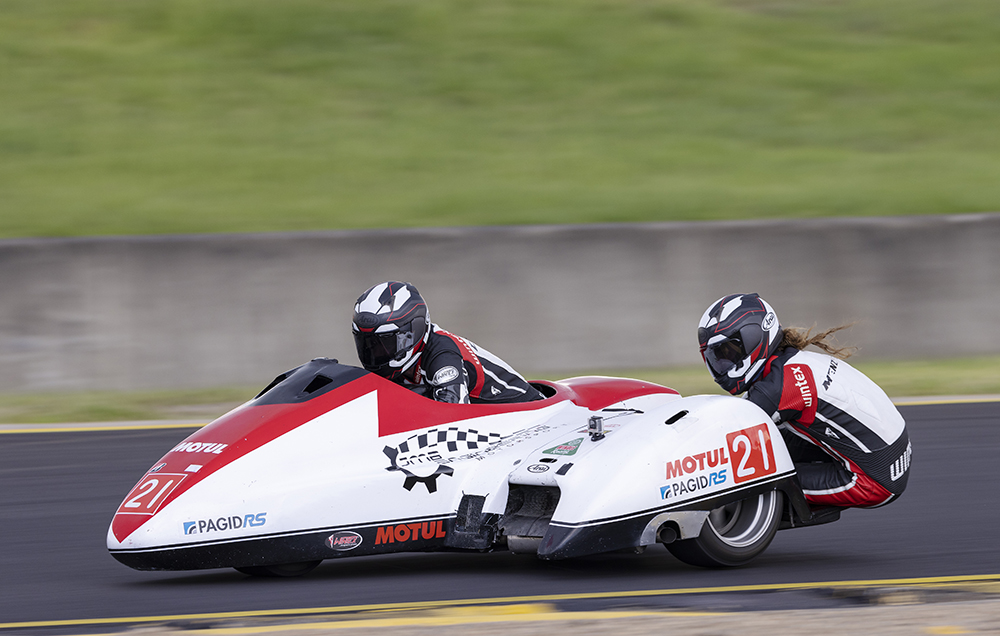
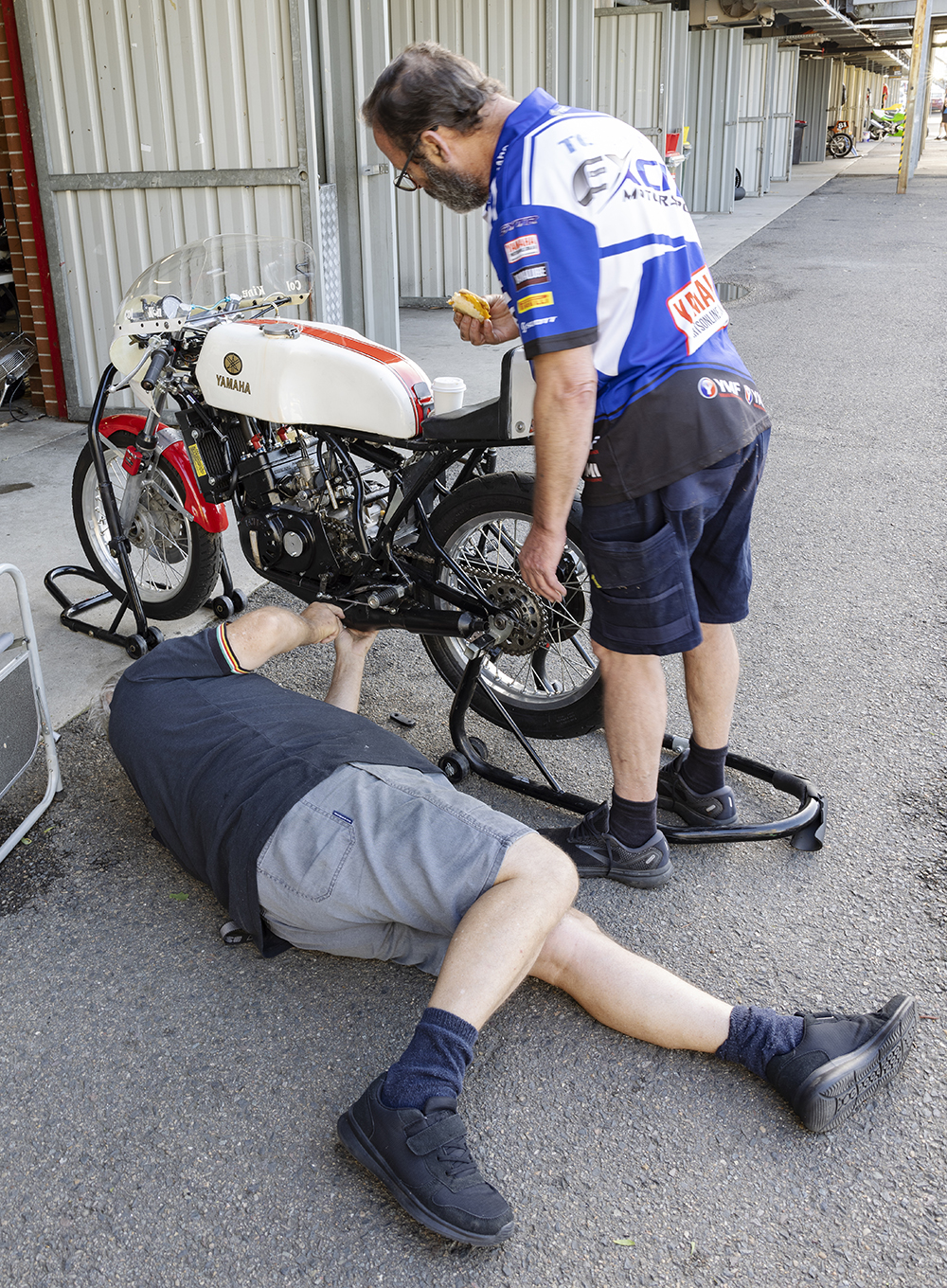
Words Hamish Cooper + Photography Phil Aynsley











